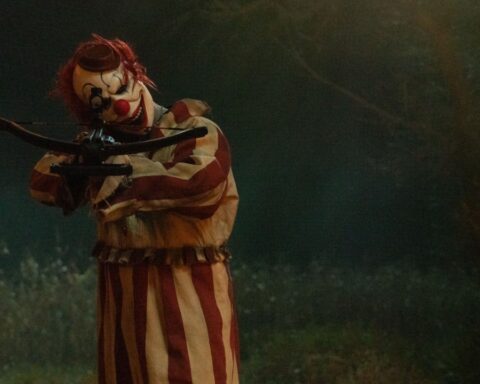Nestled along the banks of the Hudson River in Westchester County, New York, Sleepy Hollow is a town steeped in history and mystery. With its colonial roots and famous ties to American folklore, Sleepy Hollow has evolved from a small Dutch settlement to an iconic destination, known worldwide for its association with Washington Irving’s classic story “The Legend of Sleepy Hollow.” This article explores the rich history of Sleepy Hollow, tracing its transformation from an early colonial outpost to a place where history, myth, and modern life intersect.
Colonial Beginnings
Sleepy Hollow’s history begins in the 17th century, during the period of Dutch colonization. The area, originally inhabited by the Wecquaesgeek, a branch of the Lenape Native Americans, was part of the expansive Dutch colony of New Netherland. In the 1640s, Dutch settlers began to establish farms along the fertile land surrounding the Pocantico River, which flows through what is now Sleepy Hollow.
One of the earliest known European settlers in the area was Frederick Philipse, a wealthy Dutch merchant who acquired a large tract of land from the Dutch government. By 1683, Philipse had expanded his estate into a manor covering 52,000 acres, stretching from the Hudson River to the Bronx River. He constructed Philipse Manor, a grand estate near the Pocantico River, which became the center of life in the region. The manor house, built in the 1680s, still stands today as the Philipse Manor Hall, a historic site that offers a glimpse into the town’s colonial past.
The area’s early residents were largely of Dutch descent, and their presence remained strong even after the British took control of New Netherland in 1664, renaming it New York. The village was initially called “North Tarrytown,” but it retained a distinctly Dutch character, with the church serving as a hub for community life. In 1697, Philipse donated land for the construction of the Old Dutch Church of Sleepy Hollow, one of the oldest surviving churches in New York. The church, along with its adjoining burying ground, would later become a prominent feature in local folklore.

Revolutionary Era
Sleepy Hollow, like much of the surrounding area, was deeply affected by the American Revolution. Situated between British-controlled New York City and American-held territory to the north, Westchester County became known as the “Neutral Ground,” a contested and chaotic region where neither side maintained firm control.
Residents of Sleepy Hollow found themselves caught in the middle of the conflict, with the area frequently raided by both British forces and American sympathizers known as “Patriots.” The local Dutch community, many of whom had pledged loyalty to the British Crown under Frederick Philipse, faced persecution when the tide of war turned in favor of the American cause. Philipse himself was forced to flee to England, and his vast estate was confiscated and sold off by the new American government.
Washington Irving and “The Legend of Sleepy Hollow”
Sleepy Hollow’s greatest claim to fame arrived in the early 19th century, thanks to Washington Irving, an American author and historian. In 1820, Irving published “The Legend of Sleepy Hollow” as part of his collection The Sketch Book of Geoffrey Crayon, Gent., which also included the equally famous story “Rip Van Winkle.”
Irving’s tale, set in the late 18th century, tells the story of Ichabod Crane, a superstitious schoolmaster, and his fateful encounter with the spectral Headless Horseman. The story is set in a small, secluded valley along the Hudson River that Irving calls “Sleepy Hollow,” a place renowned for its eerie atmosphere and ghostly legends.
The Headless Horseman is described as the ghost of a Hessian soldier who lost his head to a cannonball during the Revolutionary War and now haunts the roads at night, searching for his missing head. Irving’s tale captured the imaginations of readers and cemented Sleepy Hollow’s place in American folklore.
Though Irving took creative liberties in crafting his tale, he based much of his description of Sleepy Hollow on the real-life town and its surroundings. The Old Dutch Church and its graveyard, where many notable figures from the area’s history are buried, feature prominently in the story. Irving himself is buried in the adjacent Sleepy Hollow Cemetery, just a short distance from the setting of his legendary tale.
Industrial Growth and the Changing Identity of Sleepy Hollow
In the 19th and early 20th centuries, the village of North Tarrytown (as it was officially known) underwent significant industrial development. The arrival of the railroad in the mid-1800s brought new economic opportunities, and the town became home to several factories, including a major General Motors assembly plant that opened in the early 20th century.
Despite the industrial boom, Sleepy Hollow retained much of its historic charm, with many of its early colonial buildings and landmarks preserved. By the late 19th century, wealthy New Yorkers seeking a reprieve from city life began building grand estates in the area, drawn by the region’s scenic beauty and proximity to the Hudson River.
In 1996, the village embraced its legendary roots by officially changing its name from North Tarrytown to Sleepy Hollow. This decision was a nod to the village’s rich history and its enduring connection to Irving’s famous story.

Modern Sleepy Hollow: A Blend of History and Legend
Today, Sleepy Hollow is a thriving community with a population of around 10,000 residents. While it has modernized, the town still embraces its historic and literary heritage. The Old Dutch Church, Philipse Manor, and other colonial-era landmarks are well-preserved and open to visitors, offering a glimpse into the town’s past. The Sleepy Hollow Cemetery, where Washington Irving is buried, has become a pilgrimage site for fans of his work.
Each fall, Sleepy Hollow draws thousands of tourists for its seasonal events, including haunted hayrides, tours of historic sites, and retellings of “The Legend of Sleepy Hollow.” The annual Halloween season in Sleepy Hollow is one of the town’s biggest attractions, celebrating its reputation as one of the spookiest places in America.
Despite its fame as the setting of a ghost story, Sleepy Hollow remains a town deeply rooted in history, where the past is ever-present and myth and reality coexist in fascinating ways. As both a modern village and a symbol of America’s literary heritage, Sleepy Hollow continues to captivate visitors and residents alike, ensuring that its unique legacy endures.
Best Things to Do and Places to Visit in Sleepy Hollow
Less than 30 miles from Midtown Manhattan lies the quaint village of Sleepy Hollow in Westchester County, New York. Each fall, the otherwise unassuming destination, which has a population of just under 11,000, lures in throngs of thrill-seeking travelers.
According to Natasha Caputo, director of Westchester County Tourism & Film, the dynamic village is renowned for its rich history and deep-rooted connection to Washington Irving’s 1820 tale, “The Legend of Sleepy Hollow.” Although a visit to Sleepy Hollow is a must during the spooky season, it’s sure to be crowded, which is why travelers will want to plan ahead as much as possible. Below is the ultimate guide to Sleepy Hollow, highlighting the best places to stay, things to do, dining options, and special Halloween events.
Where to Stay in Sleepy Hollow
Sleepy Hollow Hotel
The Sleepy Hollow Hotel is one of the village’s very few hotels. The property spans 11 acres of grassy, tree-lined grounds. When guests aren’t out and about exploring, they can be found swimming in the lap pool, relaxing in the sauna, or digging into breakfast staples like omelets and fresh-baked pastries at the charming Bistro Z Restaurant.
Tarrytown House Estate on the Hudson
A few minutes down the road in nearby Tarrytown, travelers can choose from historic hotels with castle-like exteriors. Tarrytown House Estate on The Hudson is ideal for families with its year-round indoor pool (there is also an outdoor pool for adults that’s open seasonally) and on-site sports like tennis, racquetball, bocce ball, and volleyball. The sprawling 26-acre grounds and the stylish Goosefeather restaurant (which serves traditional Cantonese-style fare with a modern twist) are added bonuses. Lucky visitors may even spot the resident ghost lingering on the second floor of the King House.
The Castle Hotel & Spa
The Castle Hotel & Spa is the perfect place for a romantic escape. Surrounded by 10 acres of tranquil woodland, the renovated castle features 31 rooms and suites, some of which boast en-suite fireplaces, marble baths, and four-poster beds. Additional hotel highlights include an upscale American eatery, a spa, a cozy library, and manicured gardens.

Things to Do in Sleepy Hollow
Kykuit, the Rockefeller Estate
This former residence of the Rockefeller family — including a 40-room mansion and surrounding gardens — is now a historic landmark that’s open seasonally between May and November. Natasha Caputo notes, “Its gardens and art collections are truly captivating, making it a must-visit, regardless of the season.” Visitors can choose from a handful of tour options, which can be found online.
Philipsburg Manor
Travelers can visit Philipsburg Manor, a former mill and trading complex owned and operated by the prominent Philipse family, to learn more about the enslaved individuals who lived and worked here in the 18th century. Keep in mind that the site is only open on select dates between May and December.
Old Dutch Church
The Old Dutch Church dates back to 1685 and is most famous for appearing in “The Legend of Sleepy Hollow.” Its 2.5-acre burying ground serves as the supposed home of the Headless Horseman in the spooky tale.
Sleepy Hollow Cemetery
The historic Sleepy Hollow Cemetery serves as the final resting place for over 45,000 individuals, including Washington Irving. The 90-acre, 1849-era cemetery is open daily from Monday to Friday and offers several types of walking tours. Just outside the cemetery, you’ll find the iconic Headless Horseman Bridge and the Headless Horseman Statue.
Where to Eat and Drink in Sleepy Hollow
Hudson Farmer & The Fish
Situated on the Sleepy Hollow Riverwalk, Hudson Farmer & The Fish features “seasonal specialties from their farm, along with a full raw bar, pizza, and modern takes on favorite seafood classics,” says Sarah Marshall, senior marketing manager of Westchester County Tourism & Film. While travelers can’t go wrong with anything on the menu, consider trying one of the autumnal-inspired dishes like pumpkin bisque and fall harvest hash. Meanwhile, the beautiful Hudson River views are an incredible added bonus.
J.P. Doyle’s
“J.P. Doyle’s stands out as a charming Irish pub and restaurant, celebrated for its warm and welcoming atmosphere,” says Marshall. Both locals and visitors alike can be found inside this friendly neighborhood haunt. It’s also here where travelers will find one of the best burgers in town (aptly named the Horseman Burger).
Bridge View Tavern
According to Marshall, beer enthusiasts will especially love Bridge View Tavern for its impressive craft beer selection. Visitors can pair their brews with delicious pub fare like pulled pork sandwiches, disco fries, and chicken wings, which are smoked in-house.
Hudson Anchor Restaurant
From pasta to steak to seafood, Hudson Anchor Restaurant has it all — not to mention an incredible happy hour special (20 percent off all cocktails, beer, wine, and food at the bar Mondays-Fridays from 3:00 p.m. to 6:00 p.m.). If the weather’s nice, nab a seat on the outdoor rooftop deck. It’s also worth noting that the restaurant’s beloved weekend brunch is unavailable in October.
Santorini Greek Restaurant
Craving Greek cuisine? Look no further than Santorini Greek Restaurant. Menu highlights include any of the dips (served with fresh pita) and gyros.

Halloween in Sleepy Hollow
Given the village’s history, it should come as no surprise that Sleepy Hollow truly comes to life during the spooky season. Expect an array of Halloween-centric events, drawing in hundreds, if not thousands, of tourists. Here are some of the highlights:
The Legend Cirque
This immersive performance, an adaptation of “The Legend of Sleepy Hollow,” is set in the early 19th century and is narrated by Irving himself (in hologram form, that is). It features exhilarating live-action circus performances that’ll have guests at the edge of their seats. The Legend Cirque runs through Oct. 29 and is best suited for those ages eight and up.
The Horsemen: Terror Lies in Chaos
Thrill-seekers need not miss this spectacular haunted house experience, which runs from Oct. 6 through Nov. 5. Located at the Kathryn Davis RiverWalk Center in Kingsland Point Park, this interactive haunted house focuses on finding and destroying a headless horseman (aptly named Chaos). Just keep in mind that this attraction is not for the faint of heart: No one under 16 is allowed without a chaperone; however, per the website, it’s highly recommended that those under 12 sit this one out.
Sleepy Hollow Cemetery Events
To ring in the spooky season, Sleepy Hollow Cemetery hosts an array of special events, including a murder mystery bash and evenings with Washington Irving and Edgar Allan Poe (who are portrayed by local storytellers). For something less scary — albeit just as fun — visitors can partake in an art class to create their own haunted cemetery canvas painting. Additionally, the cemetery offers several nighttime tours, which Natasha Caputo describes as “an absolute must” for “those with an appetite for the mysterious.” These tours provide a unique opportunity to delve into the lives of its famous residents and learn about the legend of Sleepy Hollow, all beneath the eerie, moonlit skies.




SUP Witches Festival
Taking place on Oct. 15, the fourth annual SUP Witches Festival is a sight to be seen. You can watch in awe as a group of “witches” gather to paddle at Horan’s Landing – or join in on the fun. (Note that advance registration, as well as costumes, are required.) Even those who don’t get in the water can enjoy the event with live music, food, and brews.
Haunted Hayride and Block Party
Plan your visit for Oct. 20 or 21 to hop aboard the Haunted Hayride, which carries passengers via hay wagon through downtown before detouring past the Old Dutch Church. Eventually, you’ll get through a set of iron gates — before slipping into the darkness with the sound of hoofbeats and shrieks in the distance. Post-hayride, visitors can enjoy the free block party on Beekman Avenue, featuring live music, entertainment, family-friendly activities, and much more.
Sleepy Hollow “Run for Your Life” Halloween 10K
On Oct. 28, Sleepy Hollow will host its annual “Run for Your Life” Halloween 10K. The family-friendly event draws kid and adult runners, and for a fun Halloween twist, participants are encouraged to dress up.
Irving’s Legend at Washington Irving’s Sunnyside
On select dates, visitors can head to nearby Tarrytown to tour Irving’s home, which is decorated in festive fall decor. Caputo tells T+L, “Here, the legend of the Headless Horseman comes to life, enveloping visitors in a chilling narrative that’s not for the faint of heart.” While the event is only open through Halloween, the estate itself doesn’t close until Dec. 17.
Lyndhurst
Lyndhurst, a historic mansion in neighboring Tarrytown, is also well worth a visit, says Caputo. “The ‘Classic Fall Mansion Tour at Lyndhurst’ allows visitors to journey through a historic mansion adorned in the splendor of autumn.” Alternatively, plan your visit during the evening hours to check out Lyndhurst After Dark, when the mansion is draped in candlelight.



Best Time to Visit
The best time to visit Sleepy Hollow ultimately depends on your interests. For those with an affinity for all things spooky, traveling here during the fall season is ideal, “especially in October when the Halloween events and foliage are at their peak,” says Caputo. However, Sleepy Hollow also makes a great weekend getaway any time of year, especially considering its proximity to New York City.
Conclusion
From its early days as a Dutch settlement along the Hudson River to its transformation into a modern village with an immortal connection to American folklore, Sleepy Hollow has a rich and varied history. Thanks to Washington Irving’s tale, the village will forever be associated with the haunting figure of the Headless Horseman, but its real history is no less fascinating. Sleepy Hollow stands as a testament to the enduring power of legend, where history and folklore intertwine to create a place that feels timeless. Whether you’re visiting for its historical landmarks, literary significance, or thrilling Halloween events, Sleepy Hollow offers a unique and captivating experience for all who visit.





